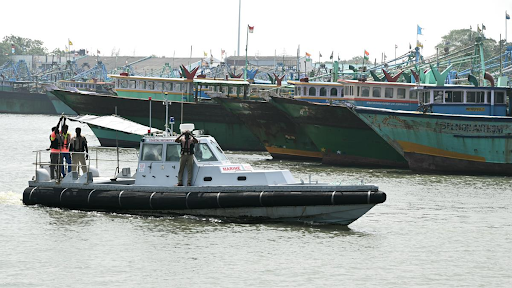Description
.jpg)
Disclaimer: Copyright infringement is not intended.
Context:
- A Rs 60,000 crore contract to modernise the Indian Navy submarine fleet to build six stealth submarines equipped with Air Independent Propulsion (AIP) technology, enabling prolonged underwater operations, has started with trials of competing teams at Mazgaon Docks, Mumbai.
Details:
- The project 75 of the Indian Navy aims to procure diesel- electric attack submarines with fuel cells equipped with AIP technology to replace the aging fleet for new combat roles.
- The Indian Navy is on a modernisation drive to strengthen the 16 conventional submarines fleet while another six Kolavari class French Scorpene submarines are under construction at Mazgaon.
- Earlier the Indian Navy conducted trials of the German submarine’s Air Independent Propulsion system in Kiel, Germany in collaboration with Germany and Spain. The Spanish Navantia and India's Larsen and Toubro are partners for this defence project to make six AIP equipped submarines of the German ship builders ThyssenKrupp Marine Systems.
Air-independent propulsion
- Air-independent propulsion, or air-independent power, is any marine propulsion technology that allows a non-nuclear submarine to operate without access to atmospheric oxygen. AIP can augment or replace the diesel-electric propulsion system of non-nuclear vessels.
_1.png)
Significance of AIP
- Extended Endurance: AIP systems enable submarines to stay submerged for longer periods without the need to surface or snorkel for air. This extended endurance enhances the stealth and survivability of submarines, allowing them to operate underwater for extended missions.
- Reduced Acoustic Signature: AIP technology typically produces less noise compared to diesel engines, which is advantageous for submarines as it reduces the risk of detection by enemy anti-submarine warfare (ASW) sensors. The quieter operation enhances the stealth capabilities of submarines, making them harder to detect underwater.
- Energy Source: AIP systems use alternative power sources, such as fuel cells, Stirling engines, or closed-cycle diesel engines, to generate electricity for propulsion and other onboard systems. These power sources offer higher energy density and efficiency compared to traditional diesel engines, enabling submarines to operate silently and efficiently underwater.
- Types of AIP Systems:
- Fuel Cell AIP: Utilizes hydrogen fuel cells to generate electricity through the electrochemical reaction between hydrogen and oxygen, producing water as the only byproduct. This technology offers high efficiency and silent operation.
- Stirling Engine AIP: Relies on external combustion engines that use a closed-cycle process to generate power. Stirling engines can run on various fuels and offer quiet operation and long endurance.
- Closed-Cycle Diesel AIP: Uses a modified diesel engine operating on a closed-cycle principle, where exhaust gases are recycled within the system to produce electricity. This technology provides improved submerged endurance compared to conventional diesel-electric submarines.
- Operational Benefits: AIP-equipped submarines provide navies with enhanced operational flexibility, allowing them to conduct stealthy intelligence gathering, surveillance, reconnaissance, and special operations missions. The extended endurance provided by AIP technology reduces the need for frequent resupply and logistical support, enabling submarines to operate independently for longer durations.
- Future Developments: Ongoing research and development efforts are focused on further improving the efficiency, performance, and reliability of AIP systems. Advancements in energy storage, fuel cell technology, and system integration are expected to enhance the capabilities of AIP-equipped submarines, making them even more formidable assets for naval operations.
Indian Navy's Modernisation Drive And The Challenge Of Chinese Submarine Presence
- The modernisation of the Indian Navy assets including the submarine fleets is to deter the growing Chinese presence in the Indian Ocean Region.
- “Pakistan acquisition of the first of eight advanced Hangor class Chinese submarines is a proxy intrusion in the Indian Ocean and Arabian Sea underwater domain and the strategy of a new stealth submarine for Pakistan was Beijing’s way of “building a pressure point” on India.
- China has claimed the Hangor-class submarines have advanced AIP) and new sensors for longer underwater endurance with an advantage over India’s highest Kalvari class – Scorpène submarines.
Conclusion:
- The AIP system is vital for the Indian Navy to keep vessels underwater for longer periods and enable the submarine fleet to have bigger vessels with more advanced capabilities. A conventional submarine not equipped has to surface frequently to recharge batteries and power its propellers which significantly increases the risk of detection.
Source:
https://www.freepressjournal.in/india/indian-navys-ambitious-submarine-fleet-modernisation-to-advance-with-aip-technology
|
PRACTICE QUESTION
Q. Discuss the significance of Air-Independent Propulsion (AIP) systems in modern submarine warfare. Explain how AIP technology enhances the stealth, survivability, and operational capabilities of submarines. (250 words)
|




.jpg)
.jpg)
_1.png)




